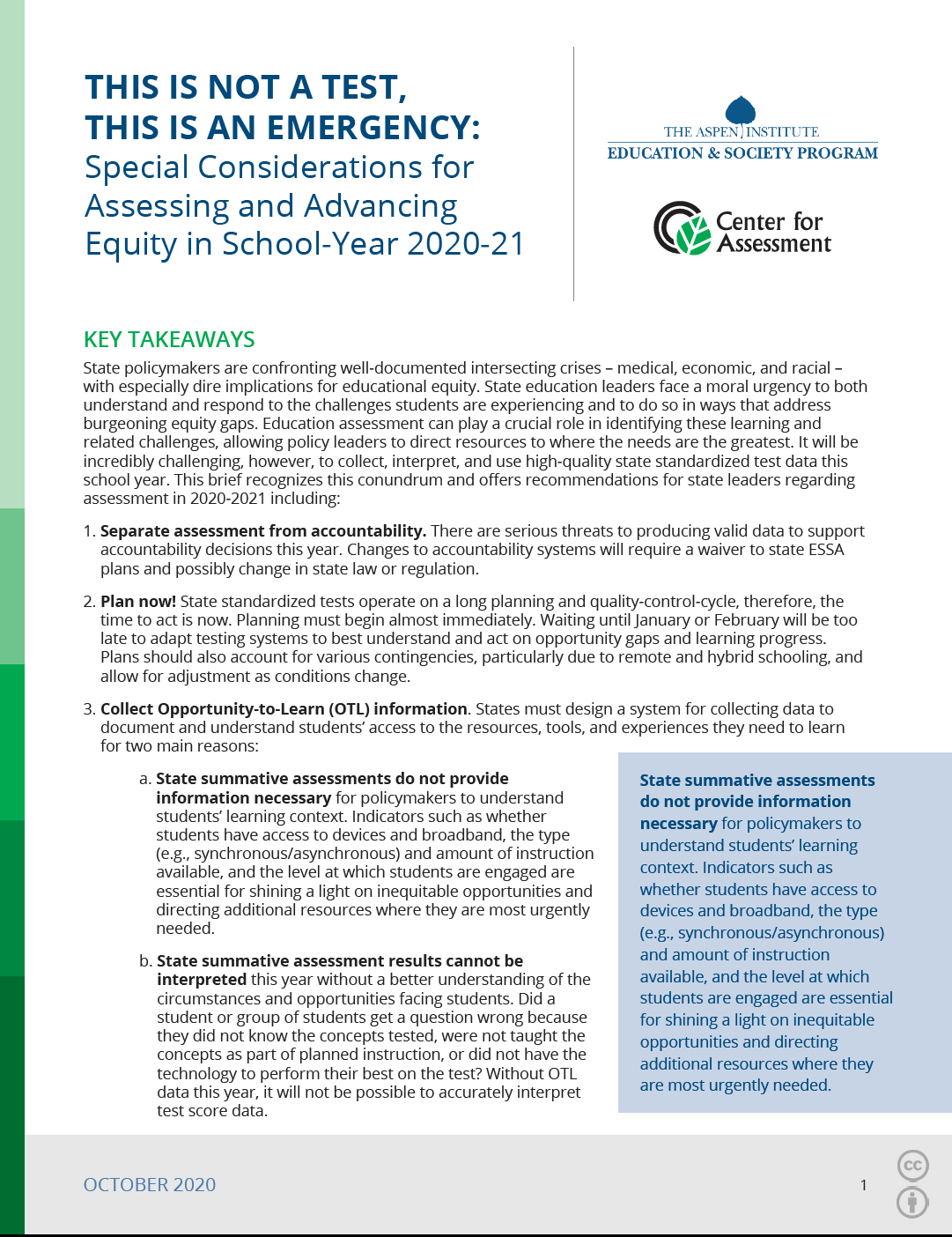THIS IS NOT A TEST, THIS IS AN EMERGENCY: Special Considerations for Assessing and Advancing Equity in School-Year 2020-21
October 1, 2020
State policymakers are confronting well-documented intersecting crises – medical, economic, and racial – with especially dire implications for educational equity. State education leaders face a moral urgency to both understand and respond to the challenges students are experiencing and to do so in ways that address burgeoning equity gaps. Education assessment can play a crucial role in identifying these learning and related challenges, allowing policy leaders to direct resources to where the needs are the greatest. It will be incredibly challenging, however, to collect, interpret, and use high-quality state standardized test data this school year. This brief recognizes this conundrum and offers recommendations for state leaders regarding assessment in 2020-2021 including:
- Separate assessment from accountability. There are serious threats to producing valid data to support accountability decisions this year. Changes to accountability systems will require a waiver to state ESSA plans and possibly change in state law or regulation.
- Plan now! State standardized tests operate on a long planning and quality-control-cycle, therefore, the time to act is now. Planning must begin almost immediately. Waiting until January or February will be too late to adapt testing systems to best understand and act on opportunity gaps and learning progress. Plans should also account for various contingencies, particularly due to remote and hybrid schooling, and allow for adjustment as conditions change.
- Collect Opportunity-to-Learn (OTL) information. States must design a system for collecting data to document and understand students’ access to the resources, tools, and experiences they need to learn for two main reasons:
- State summative assessments do not provide information necessary for policymakers to understand students’ learning context. Indicators such as whether students have access to devices and broadband, the type (e.g., synchronous/asynchronous) and amount of instruction available, and the level at which students are engaged are essential for shining a light on inequitable opportunities and directing additional resources where they are most urgently needed.
- State summative assessment results cannot be interpreted this year without a better understanding of the circumstances and opportunities facing students. Did a student or group of students get a question wrong because they did not know the concepts tested, were not taught the concepts as part of planned instruction, or did not have the technology to perform their best on the test? Without OTL data this year, it will not be possible to accurately interpret test score data.


